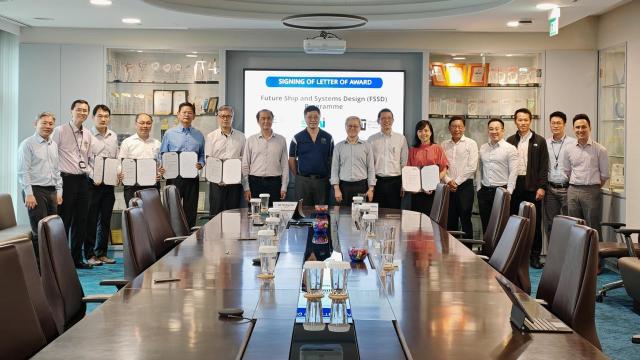Singapore’s vision for the future requires digitally-skilled mechanical engineers to transform its key industry sectors. At the Singapore Institute of Technology (SIT), this future has already begun – with the integration of mixed reality into its applied learning approach to mould the next generation of mechanical engineers.

A degree for the disruptive age
Mechanical engineering has been an important enabler of Singapore’s growth for more than five decades. But in an age of technological disruptions, yesterday’s competence is not enough to fuel tomorrow’s competitiveness.
Recognising this shift, SIT introduced the Bachelor of Engineering with Honours in Mechanical Engineering, a joint degree programme with the University of Glasgow (UofG), in 2019.
The three-year programme is designed to not just equip students with a strong foundation in mechanical engineering, but train them in digital skills that are in demand across today’s industries.
This focus on digital gives students a distinct advantage to meet the demand for professional competencies in disruptive digital technologies in industry sectors including industrial automation, robotics, smart manufacturing, maritime and healthcare.
All undergraduates of the programme will acquire digital fluency in Industrial Internet of Things (IIoT), data analytics and digital designs through project-based multidisciplinary learning integrated with industrial immersion.
In addition, they can choose from two specialisation tracks – Design or Mechatronics. The design specialisation focuses on concepts of digital manufacturing and design; while the mechatronics specialisation has an emphasis on IIoT employed in automation, robotics, unmanned systems and co-bot design.
Global perspectives suited for local context
In-depth understanding of challenges unique to Singapore and appreciation of global trends – these traits are highly sought-after by today’s employers. With the rapidly evolving business landscape, it is a challenge for any student to meet such expectations.
But with SIT’s collaborative applied learning approach, it is all possible.
By co-developing and co-teaching the curricula with UofG, a reputed global leader in engineering education, SIT puts its students in touch with the latest advancements and issues related to mechanical engineering around the world.
In addition, the joint degree programme requires students to complete an Overseas Immersion Programme (OIP) in Glasgow, UK. The three-week experience encompasses a group project and industrial site visits, giving students valuable exposure to industry best practices beyond Singapore’s borders.
Applied learning at its best
Anchored upon SIT’s unique pedagogy of applied learning, the degree programme includes the university’s signature Integrated Work Study Programme (IWSP).
Over an eight-month period, Mechanical Engineering students will be immersed in projects with companies based on their specialisation, apply theoretical knowledge in workplace settings and create solutions for real world engineering challenges.
Undergraduates will benefit immensely from SIT’s solid collaborations with the industry – a pivotal component of the IWSP’s success. Beyond the opportunity to develop deep specialist skills, students can also expand their professional network and gain opportunities to move on to full-time employment after their graduation.
Mixed reality gets real
A distinctive feature of the degree programme is the use of mixed reality software, specifically holograms, to facilitate inductive learning in design engineering.
Mechanical Engineering undergraduates will gain hands-on experience in using the Microsoft HoloLens to translate their 2D CAD designs into holographic parts of assembly testing. They can efficiently explore design options and iterations with this highly interactive and transformative technology without the need for multiple prototyping.
According to students, this immersive media has allowed them to “better map out concepts” and “practise assembling of parts without the need for physical prototypes”.
 Undergrads using Microsoft HoloLens as part of their inductive learning.
Undergrads using Microsoft HoloLens as part of their inductive learning.
 The degree programme uses mixed reality for students to efficiently explore design options and iterations without the need for multiple prototyping.
The degree programme uses mixed reality for students to efficiently explore design options and iterations without the need for multiple prototyping.
Work-learn continuum
For SIT, learning begins, not ceases, at graduation. This is especially true for a field like mechanical engineering that is continually shaped by new technologies.
To prime students to innovate in the face of disruptive changes, SIT inculcates the mindset of lifelong learning in its students throughout their course. The emphasis on a work-learn continuum has produced students who constantly learn, unlearn and relearn.
With SIT’s Mechanical Engineering degree, students will not just emerge as workers in engineering but work-ready drivers of change capable of creating positive impact for our society.
This article was adapted from The Singapore Engineers July 2020 publication with the permission of The Institution of Engineers, Singapore.
![[FA] SIT One SITizen Alumni Initiative_Web banner_1244px x 688px.jpg](/sites/default/files/2024-12/%5BFA%5D%20%20SIT%20One%20SITizen%20Alumni%20Initiative_Web%20banner_1244px%20x%20688px.jpg)


